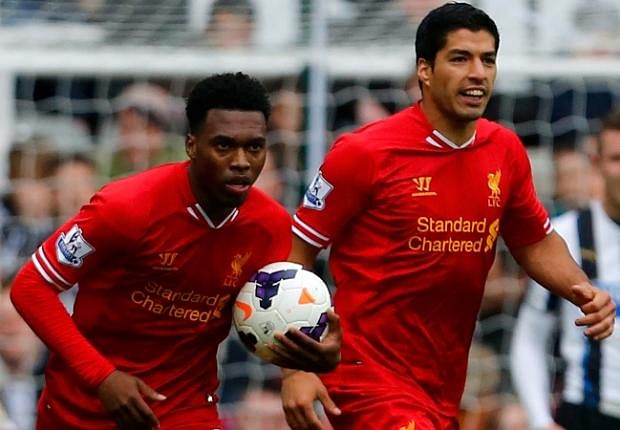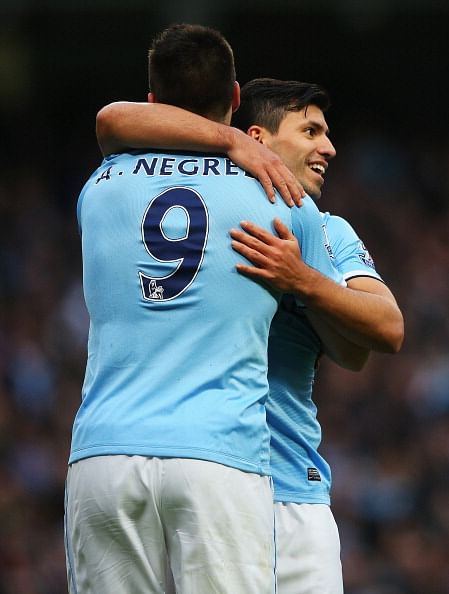The recently-concluded Premier League 2013/14 season saw fresh changes in approaches and team tactics, and how they strengthened the growing belief about the English league being the best in the world. Ingenuity and inventiveness weren’t in short supply; and the eye of the masses would definitely point to the return of strike partnerships as the welcome change in the season bygone.

Two teams that finished on top of the pile, Manchester City and Liverpool, were the obvious exponents of the two-striker formations for majority of the season. The two clubs definitely proved a point that this throwback into the days of yore is here to stay, now that it has yielded results as well. At a time when clogged midfields and ineffective target men were becoming the monotonic theme at the top level, this fresh approach has caught everyone fancy and everyone at the playing table by some surprise.
As the possession football corner is almost turned and big, numbered midfields are giving way, the rate of things evolving has been pretty quick. As long as possession football was in vogue (it still is now), dominant midfields were used which meant a lack of bodies up front. Teams built up slow, tedious attacks and moved forward as a zone, finally reaching points of the pitch where the forwards got involved directly in the play and goals were scored or goalscoring chances were created.
On the flipside, there was again the reactive nature of football that encouraged the lone-striker formation. Fast counter-attacking forwards or strong, physical forwards with good enough ball control and clinical finishing as their forte encouraged managers to overuse the lone striker formation. But it wasn’t going to live on for eternity, was it?
As much as coaches would love to not get found out by their opposite numbers, the in-vogue one striker formations all over the world meant that they had to search for routes alternate. Coaches remained reluctant to swerve away from their notions, but a select few had the hubris to go the distance and rip up the sheets. Two such managers, Manuel Pellegrini and Brendan Rodgers, offered a slap to those discerning faces as their Manchester City and Liverpool sides respectively embodied success with strike partnerships. As if they reinvented this tactical tweak, it was like a breath of fresh air in the increasingly one-dimensional nature of teams. Divisive arguments about defensive organizations or midfield shapes or marking systems took the back seat once this one striker-two striker thing set off in earnest.

It still isn’t in fashion though; only three Premier League teams employ two striker formations, with Hull City being the third team besides the aforementioned duo. The positive thing about strike partnerships is that the chances of scoring a goal increases as the number of bodies stationed close to the opposition goal increases, and that’s general sense to you. With two forwards on the prowl, defenders face the risk of getting caught out with a momentary lapse in concentration or an unusual rush of blood. And the number of outlets increases too. Midfielders can look forward to one more option up top and crossing wingers and wing-backs almost always have a man inside the box to aim at.
Defensively too, this could be a positive. The influence of the deep-lying playmakers wanes as they are forced to mark their man, and there is always a fear of getting caught out and outnumbered in counter attacks for the opposition. Two bodies upfront means that deep defending sides have two ready-made targets to aim at when put under the cosh, making it that bit more easy for the hoofing centre-backs and the goalkeeper in finding an avenue.
Manchester City and Liverpool produced two of the most freely scoring teams in Premier League history last season, and it is attributed mainly to the new dawn of the striker partnerships in both teams. While Sergio Aguero and Alvaro Negredo/Edin Dzeko made hay while the others chipped in for City, the impact Luis Suarez and Daniel Sturridge had on Liverpool’s success story last season is beyond questioning. The SAS pairing was the best in the land, both in terms of goals scored and chances created. While Manchester City profited mostly from creative midfield play that had it much easier with two targets upfront to ping dangerous balls into, Liverpool’s success had almost the entirety to thank Suarez and Sturridge for.
There is a reason why the striker partnerships are here to stay. Most teams would be happy enough to outscore opponents to win games, apart from that odd Mourinho type teams, and the odds of doing that increases ten-fold when the lone striker is replaced by two of the kind as ManCity and Liverpool showed last season.
